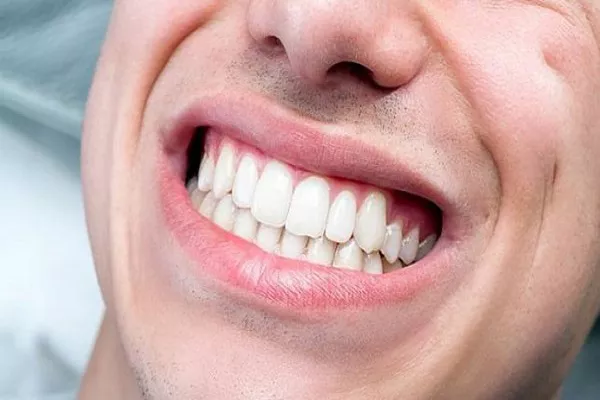In the realm of oral health, periodontitis stands as a significant concern affecting a vast number of individuals globally. Understanding the duration of periodontitis is crucial for effective management and prevention of further complications. In this comprehensive guide, we delve into the intricacies of periodontal disease, exploring its timeline, chronic nature, and the pivotal role of proper treatment in maintaining optimal gum health.
The Prolonged Battle: Chronic Periodontitis
Chronic periodontitis, a prevalent form of gum disease, can have a lasting impact on an individual’s oral health. This condition is characterized by inflammation of the gums, leading to the gradual deterioration of the supporting structures around the teeth. Typically, chronic periodontitis progresses slowly, with symptoms often unnoticed until the disease reaches an advanced stage.
a. Silent Onset: Chronic periodontitis often starts with subtle signs, such as mild gum bleeding during brushing or flossing. The gradual progression may not manifest noticeable discomfort, making it imperative to pay attention to these early indicators.
b. The Cascade Effect: If left untreated, chronic periodontitis can advance, affecting the bone and connective tissues that support the teeth. This cascade effect underscores the importance of timely intervention to prevent irreversible damage.
c. Data Insight: According to a study published in the Journal of Periodontology, chronic periodontitis can persist for years, leading to complications like tooth mobility and even tooth loss if not adequately addressed.
Timeline of Periodontal Disease: From Onset to Intervention
Understanding the timeline of periodontal disease is paramount in adopting a proactive approach to oral health. The duration of periodontitis varies from person to person, influenced by factors such as oral hygiene practices, genetics, and overall health.
a. Initial Stage – Gingivitis: The journey of periodontitis often begins with gingivitis, characterized by inflamed and bleeding gums. Gingivitis is reversible with proper oral care, emphasizing the need for regular dental check-ups and effective hygiene practices.
b. Progression to Periodontitis: Without timely intervention, gingivitis can escalate into periodontitis. This stage involves the formation of pockets between the teeth and gums, harboring harmful bacteria. The duration of this transition depends on individual factors but can span months to years.
c. Intervention is Key: Research published in the International Dental Journal emphasizes that early intervention significantly impacts the duration of periodontitis. Professional dental treatments, coupled with consistent oral hygiene, can halt the progression and even reverse certain symptoms.
Tailored Treatment Approaches: Personalized Strategies for Periodontitis
Recognizing the chronic nature of periodontitis, personalized treatment strategies play a pivotal role in managing and mitigating the impact of the disease.
a. Scaling and Root Planing: A cornerstone in periodontal therapy, scaling and root planing involve the removal of plaque and tartar from the tooth surfaces and beneath the gumline. This procedure aims to eliminate bacterial colonies and promote gum healing.
b. Antibacterial Therapy: In cases of advanced periodontitis, adjunctive antibacterial therapy may be recommended. This could include antibiotics or antimicrobial mouthwashes to target and eliminate specific strains of bacteria contributing to the disease.
c. Ongoing Maintenance: According to a comprehensive review in the Journal of Clinical Periodontology, long-term success in managing periodontitis requires ongoing maintenance. Regular dental check-ups, meticulous oral hygiene practices, and lifestyle modifications are integral components of a successful treatment plan.
Holistic Approach: Beyond Dental Visits
Managing periodontitis extends beyond dental office visits, emphasizing the importance of a holistic approach to oral health.
a. Nutritional Considerations: Scientific studies, including those published in the Journal of Periodontology, highlight the impact of nutrition on gum health. Adequate intake of vitamins and minerals, particularly vitamin C, is associated with reduced periodontal disease risk.
b. Lifestyle Modifications: Habits such as smoking have been linked to an increased risk of periodontitis. Quitting smoking and adopting a healthy lifestyle contribute to overall well-being and positively influence periodontal health.
c. Patient Education: Empowering individuals with knowledge about the duration of periodontitis and preventive measures is crucial. Dental professionals play a key role in educating patients about the importance of regular dental care and maintaining optimal oral hygiene practices.
Conclusion:
In conclusion, understanding how long periodontitis lasts is fundamental for individuals seeking to preserve their oral health. Chronic in nature, periodontitis demands a proactive and personalized approach to treatment. By grasping the timeline of the disease and embracing tailored interventions, individuals can navigate the complexities of periodontal health and work towards maintaining healthy gums for years to come. Regular dental visits, combined with lifestyle modifications and informed choices, serve as the pillars for a comprehensive strategy in the battle against periodontitis.
Related Links:
How to fight gingivitis fast?
How to prevent gingivitis from getting worse?
How to get rid of bleeding gums naturally?
































